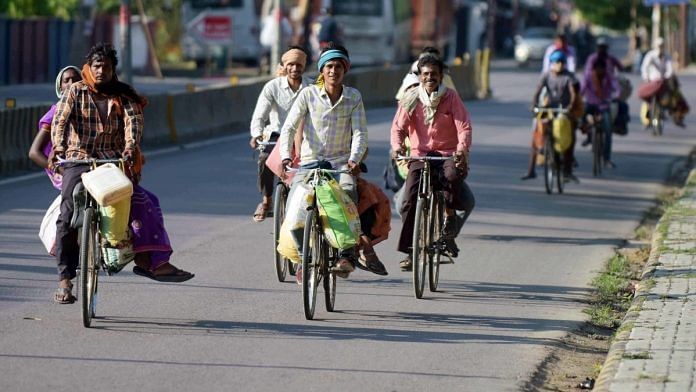New Delhi: The Indian economy may have shrunk 15-25 per cent in the first quarter of financial year 2020-21, when the Covid-19 pandemic brought economic activity to a near-complete halt from April to June.
The National Statistical Office (NSO) will release the quarterly GDP numbers Monday evening, but economists forecast that contraction could be up to 25 per cent, perhaps one of the worst quarterly contractions ever seen by India.
Manufacturing and services are expected to be the worst-hit sectors, along with a sharp contraction in private consumption, with only agriculture and government consumption providing some support to economic activity.
The pandemic also adversely affected discretionary private consumption spending with the two-month lockdown seeing many people staying at home.
Both the government and the Reserve Bank of India (RBI) have announced many measures to provide respite to different sectors and borrowers, including a Rs 21 lakh crore economic package and 1.15 percentage points reduction in policy rates, but the economic contraction is expected to continue into the second quarter with many states introducing intermittent lockdows to curb the spread of the pandemic.
The economy is expected to shrink by at least 10 per cent in the full year.
Also read: There will be repercussions, won’t borrow to pay GST compensation, Modi govt tells states
What the economists predict
In a note dated 25 August, Rahul Bajoria, chief India economist, Barclays, forecast that the economy may contract by 25 per cent in the first quarter, pointing out that growth in government consumption will be unable to cushion a near washout in almost all other expenditure segments. He added that the worst may be over but growth will remain weak.
“While April and May were the worst months from an economic perspective, the still increasing Covid case load has led to parts of India being under localised lockdowns through June, July and August. For a large number of indicators that had been improving in May and June, activity levels have begun tracking sideways,” Bajoria said.
“This raises concern that the bounce in activity could be relatively short lived, and at risk of reversal,” he added, forecasting an 8 per cent contraction in the July-September quarter.
In its annual report released last week, the RBI termed the retrenchment in economic activity as “unprecedented in history”. It flagged the shock to consumption as “severe” and pointed out that it will take “quite some time to mend and regain the pre-Covid-19 momentum”.
It also warned about potential output losses in the future as well, pointing out that though the pandemic is a health crisis, it will have “deleterious ramifications across real and financial sectors”.
Also read: India can grow at 10% but import substitution policy could hurt that, Arvind Panagariya says
‘Severe disruptions’
Sunil Kumar Sinha, principal economist and director of public finance at India Ratings, said in a 28 August note that agriculture is one sector that has remained relatively untouched by the pandemic and the lockdowns.
This will help in increasing rural demand, though he added that this can “at best extend support to consumption demand… not be a substitute for urban demand”.
“The Covid-19 led business disruptions during end-March-May 2020 have been so severe for the production, supply/trade channels and the activities especially in sectors such as aviation, tourism, hotels and hospitality that FY21 GDP growth is expected to contract for the first time since FY80 (1979-80). Although non-agricultural economic activities are slowly limping back, they are still much lower than pre-Covid-19 level,” he said, forecasting the economy to contract 17 per cent in the first quarter.
The Indian economy had grown at 5.2 per cent in the corresponding year-ago period, and at 4.2 per cent in the full year.
In a note dated 19 August, Care Ratings forecast that the economy may have contracted by 20 per cent in the April-June quarter, led by a 35 per cent contraction in manufacturing and 17 per cent contraction in services, with agriculture growing by 3.5 per cent.
“Among the eight sectors under the broad categorisation of GVA, two sectors namely agriculture, forestry and fishing; and public administration, defence and other services, are expected to register positive growth rates while the others are expected to de-grow in Q1 FY21 mainly on account of pandemic led disruptions,” it said.
Also read: July brings hope for Indian economy as animal spirits begin to move




“worst could be over” – how our luddite liberals and selective secularists will hate this phrase! They were denuding themselves to believe that the economy will bring this government to its knees, Congress will come back to power and they would get their Padma other awards. They have out of awards to return and are left with only their PAN and Aadhar cards.